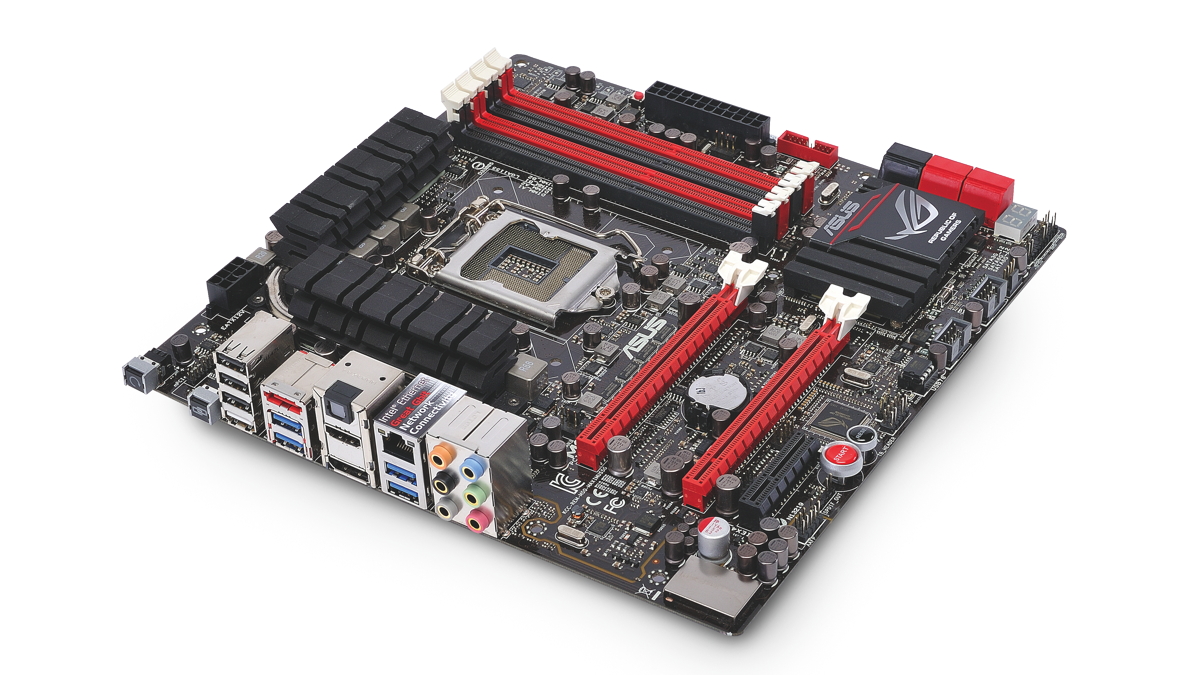Why you can trust TechRadar
As tightly, neatly and expertly packaged as the Gene is, it can't quite match its in-house rival the Asus Sabertooth Z77 for sheer visual polish or indeed cooling management.
But never mind, the pint-sized RoG is all about squeezing enthusiast class performance and features into a compact MicroATX form factor.
Asus has certainly done a good job of keeping everything as low profile as possible given the overall compactness with little to no MOSFET cooling intrusion into the socket area, even if the memory DIMM slots are a little close for comfort.
We've already covered the features that come with all Z77 motherboards in our MSI Z77A-GD65 review, but suffice to say you'll make very few compromises in return for the smaller dimensions.
Two PCI Express x16 slots and support for both SLI and Crossfire is all almost anyone will need on the graphics side.
You also get Lucid Virtu GPU virtualisation technology in newly revised MVP trim.
This allows you to have a discrete graphics card, or cards, installed and still use the QuickSync transcode engine embedded in Intel's integrated graphics core, as found in all Intel LGA1155 processors.
Not only that, via a technology known as Virtual Vsync, it also has new features that let you set graphics modes on a per-application basis and prevent screen tearing without kyboshing frame rates.
Then there are the usual RoG Maximus frills, including the RoG connect port and LED debug display along with high end components shared with Rampage boards and designed to cope with the extreme cooling used by pro overclockers.
That may sound irrelevant to most users, but it should make for good long-term stability with more moderate real-world overclocking.
The Asus board also has shielded routing for the sound adapter to improve audio quality.
Small in stature, the Maximus V Gene packs a very hefty punch.
It delivers great performance with default settings and its auto-overclocking feature is the most effective we've yet seen for an LGA1155 motherboard.
At around £150, the Gene isn't exactly a bargain. It also can't quite match its Sabertooth sibling when it comes to outright overclocking headroom or aesthetic panache and cooling management.
We liked
You cannot argue with the RoG Maximus V Gene and the way it's managed to squeeze desktop-class performance into such a small, feature-rich motherboard.
It also manages stock performance that easily out-strips it's ATX scale cousins.
We disliked
It's tough to necessarily call it a dislike, but it's a shame the Maximus V Gene can't match the Asus Sabertooth Z77 for its overclocking performance. Still, it's testement to the general power of the Gene that we want it to have the same sort of OC chops as the larger competition.
Verdict
A lot of power and features expertly crammed into a compact board, with great performance at default settings.
Technology and cars. Increasingly the twain shall meet. Which is handy, because Jeremy (Twitter) is addicted to both. Long-time tech journalist, former editor of iCar magazine and incumbent car guru for T3 magazine, Jeremy reckons in-car technology is about to go thermonuclear. No, not exploding cars. That would be silly. And dangerous. But rather an explosive period of unprecedented innovation. Enjoy the ride.
